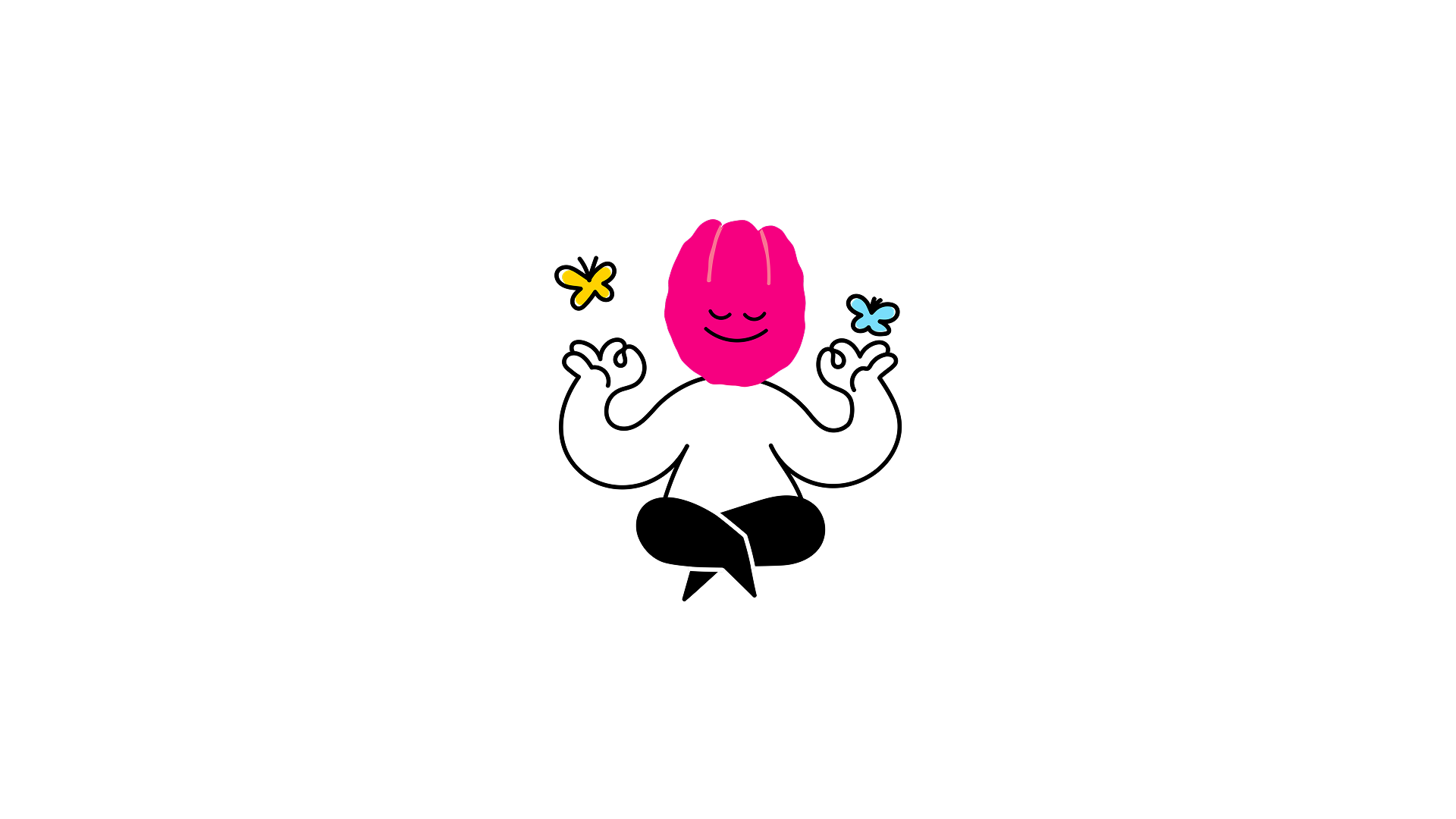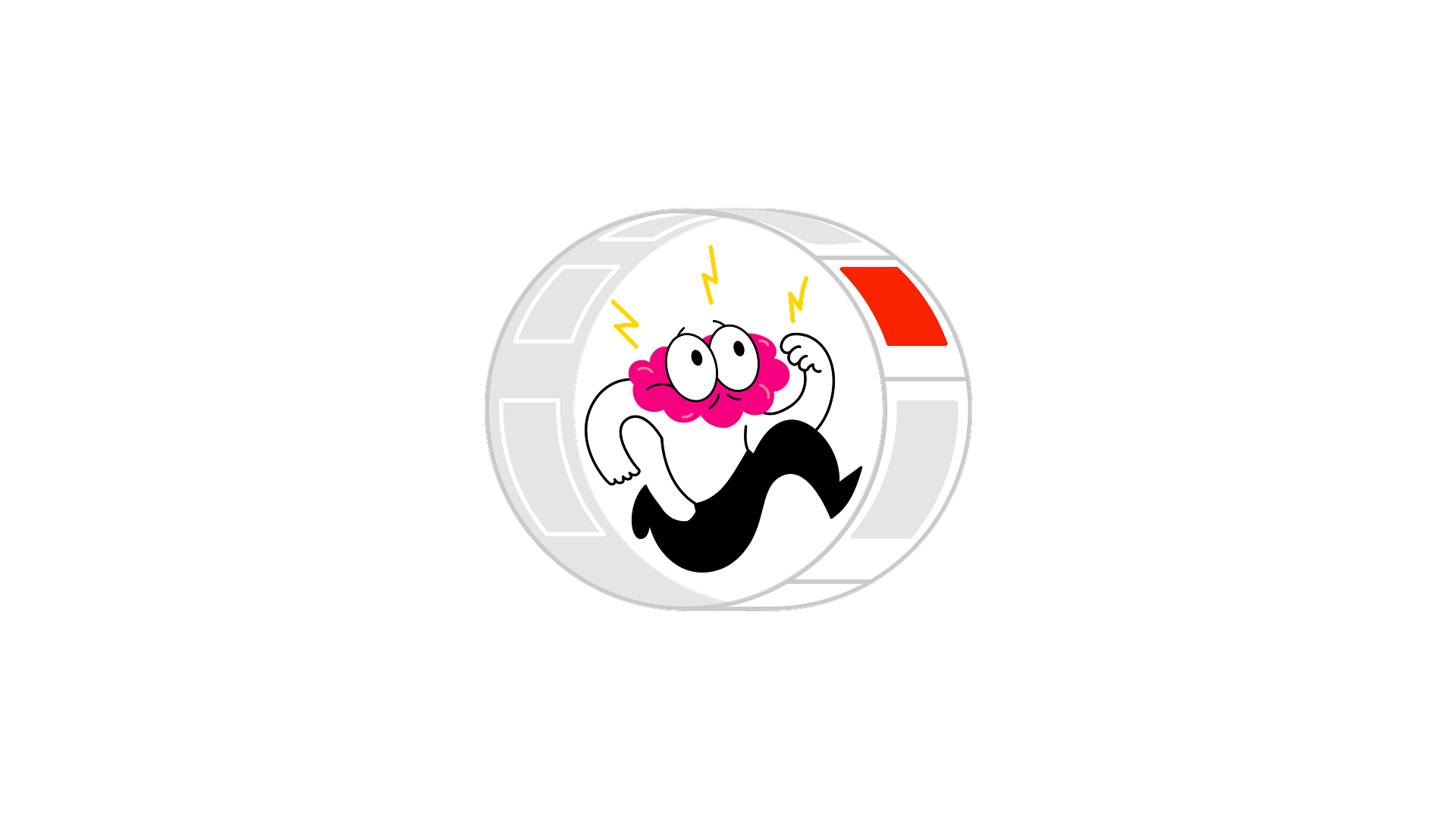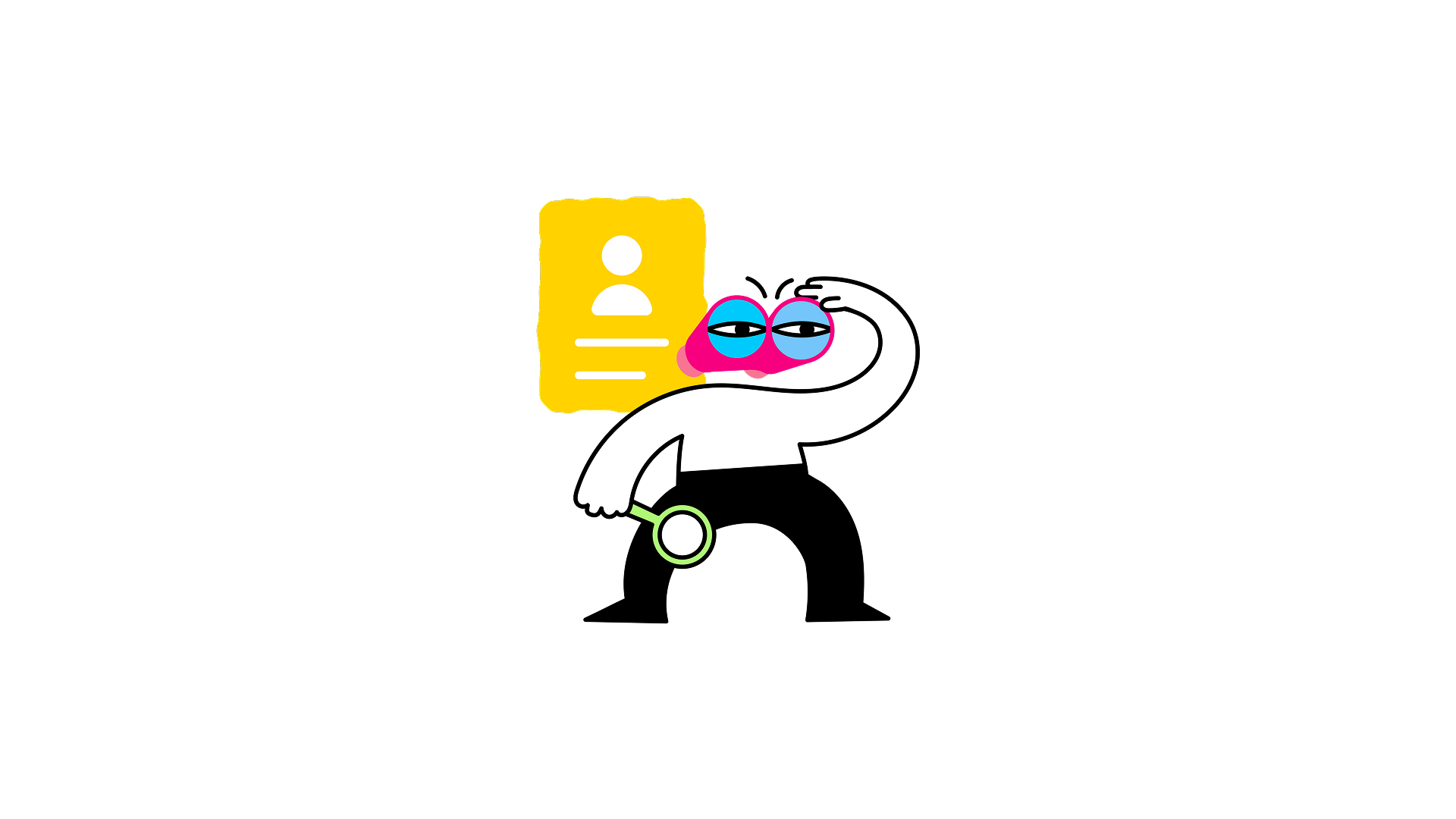High-performance cultures in tech
High-performance cultures have become a hallmark of the tech industry. Companies like Meta, Atlassian, and Amazon have built their reputations on speed, scale, and relentless ambition. These environments reward output, celebrate rapid iteration, and maintain a consistent pace of delivery that has become the industry norm.
It’s easy to see the appeal. High-performance cultures are often credited with driving innovation, pushing teams toward big goals, and outperforming competitors. But in recent years, a more complicated picture has emerged. While these environments can deliver results, they also take a toll on individuals, teams, and long-term sustainability.
Burnout, stress, and attrition are no longer fringe concerns; they are increasingly recognized as significant issues. Creative roles, such as design, are especially impacted, often squeezed between tight timelines and pressure to prove value.
As more people speak up about the hidden costs of working this way, a quiet shift is underway.
This article examines what high-performance culture truly entails, its impact on the individuals performing the work, and what alternatives might provide a healthier, more sustainable path forward.
What is a high-performance culture?
In theory, a high-performance culture is one where individuals and teams consistently strive to reach ambitious goals and are held accountable for delivering results. In practice, it’s a system built around measurable outcomes, fast execution, and continuous optimization. Many of the world’s most influential tech companies have embraced this model as a key to innovation and growth.
These cultures tend to share a few common traits:
- Clear goals and performance metrics
- Frequent reviews and structured feedback cycles
- Strong emphasis on productivity, speed, and scale
- High levels of internal competition and visibility
- Recognition is tied closely to output and impact
Within this system, there’s often a strong sense of urgency—sometimes framed as a feature, not a bug. Rapid iteration becomes the norm. Shipping quickly is seen as a proxy for progress. Individuals are expected to keep pace, regardless of the conditions.
For some, this kind of environment can be energizing. It creates momentum and offers clear incentives. However, it also assumes that sustained intensity is always possible—and always worthwhile. That assumption doesn’t hold true for everyone, and it’s one reason why the cracks are becoming increasingly difficult to ignore.
Why high performance isn’t always high impact
The upside
At their best, high-performance cultures can drive results that most companies only hope to reach. Clear goals, strong accountability, and a shared sense of urgency can energize teams and unlock rapid innovation. When supported by trust and direction, people often push past what they thought was possible.
There’s data to back this up. Companies with strong performance cultures report higher revenue growth, stronger engagement, and greater adaptability. For ambitious teams working on fast-moving products, the structure and momentum of these cultures can be energizing and motivating.
But that energy comes at a cost.
The dark side
Sustained intensity is rarely sustainable.
In cultures where speed and output are always the priority, burnout isn’t a risk; it’s the norm. People may look productive on the surface, but beneath that, resentment builds. Many quietly disengage, feeling overwhelmed, exhausted, and stuck in performative cycles that reward motion over meaning.
For many, especially in creative or human-centered roles, the deeper issue is values misalignment. When quality takes a backseat to speed, or when decisions are made based on intuition rather than evidence, it becomes harder to stay motivated. Over time, the emotional cost adds up.
Toxic patterns emerge, long hours to stay competitive, jockeying for high-visibility projects, and constant signaling of value. Reviews are framed as fair but often feel relative, turning teammates into quiet competitors. A few may thrive, but most burn out or disengage.
Designers often feel the squeeze most
Designers in high-performance environments often face a particular kind of squeeze.
With ratios like five product managers to every one designer, there’s pressure to move fast, stay visible, and deliver impactful work week after week, all while protecting craft, advocating for users, and keeping up with new tools like generative AI.
This dynamic forces designers into a constant tradeoff: say “no” to most requests to protect quality, or say “yes” to everything and risk delivering mediocre work. It’s a rock-and-a-hard-place situation with no good outcomes.
The problem isn’t just workload; it’s that the system often leaves no room for design to do what it does best. Exploration, reflection, iteration—these are the first things to go when timelines get tight. And without space for creative thinking, design becomes reactive rather than strategic.
Many designers also feel pressure to constantly prove their value.
When business goals consistently override user research or evidence-based decisions, it becomes harder to stay motivated. That kind of dissonance can be exhausting and lead to the erosion of energy, motivation, and the kind of culture that supports real design work.
The cost of constant high-performance
At Meta, some employees described being “burnt out,” feeling “increasingly gaslit,” and facing “Sisyphean headwinds.” Internal documents portray a culture shaped by constant urgency and repeated ‘surge’ periods, leaving employees emotionally taxed and disconnected from their work.
The sentiment isn’t isolated to Meta.
Atlassian, once praised for its collaborative and flexible culture, has undergone a sharp transformation following the rollout of its APEX review system and stack ranking.
One employee described the change as:
“A move from encouraging growth and creativity, flexible working, and a work-life balance, to one that is competitive, cut-throat, and unsustainable.”
Teams report working nights and weekends just to avoid performance improvement plans (PIP) or to get ahead.
The comparisons to Amazon and Meta are hard to ignore.
As one Atlassian employee posted on Blind:
“The performance review cycle keeps everyone stressed all year. It creates a race between peers, where everyone is trying to outshine each other just to stay afloat. Managers are under pressure too, some lash out at their teams without realizing they’re part of the problem. The whole system feels like it’s adopting the worst of Amazon and Meta’s culture. APEX doesn’t feel like a tool for growth, it feels like it was built to make firing easier.”
Another wrote:
“We used to help each other succeed. Now it’s about surviving the review cycle.”
And while companies avoid using the term “stack ranking,” many say it’s exactly what’s happening. One Reddit user commented:
“Stack ranking has to be one of the most toxic decisions, making people compete against each other is going to completely undermine getting anything done as a team, training and upskilling because employees are now motivated to backstab each other.”
Internally, Atlassian refers to its version of stack ranking as “calibration.” As one employee explained:
“Managers go into calibration sessions, which is where you’re ‘calibrated.’ The whole thing is absolutely ranking and comparing and pushing people across the bell curve.”
The review process remains deeply comparative and stressful.
At Atlassian, there’s a strong current of resentment surrounding the need to “play the game,” securing high-visibility projects, promoting your work, and continually signaling value. On the surface, it’s just a performance framework. In reality, it’s a system that breeds stress, rivalry, and burnout.

Healthier ways to build great teams
If high-performance culture pushes people to deliver more, faster, alternative models ask a different question: How do we create the right conditions for great work to happen, and keep happening?
Many of the most resilient and creative teams in tech don’t build on pillars of pressure. Instead, they build around collaboration and purpose.
When performance comes from working well together
In collaborative cultures, performance isn’t about who works the hardest; it’s about how well people work together. Teams align around shared goals, give and receive feedback openly, and collectively solve problems.
Psychological safety is essential. When people feel safe to speak up, ask for help, and challenge ideas without fear of judgment, trust builds, and it is this trust that makes real innovation possible.
Slack’s culture is rooted in empathy, not just as a product principle, but as a way of working. Founder Stewart Butterfield put it simply: “It’s very difficult to design something for someone if you have no empathy.” This mindset shapes how Slack builds tools and how its teams operate. The company’s values—courtesy, craftsmanship, playfulness, solidarity, and helping people thrive—reflect a desire to make work more pleasant and productive. Diversity and inclusion are also core to Slack’s culture, grounded in the belief that a range of perspectives drives better outcomes.
This culture isn’t just about good vibes (though they matter). Slack’s emphasis on empathy, inclusion, and thoughtful design creates an environment that values how people work, not just what they produce. The result is a workplace that aims to be both productive and humane.
When meaning and well-being drive the work
Where collaborative cultures focus on how teams work together, sustainable cultures focus on why the work matters and whether the way it’s done is healthy and humane.
These environments prioritize well-being and meaningful work. Leaders model transparency and set realistic expectations. Employees are trusted to manage their energy, not just their output.
Companies like Buffer and Patagonia are recognized for this approach, and others, such as Slack, have introduced flexible work models, well-being tools, and cultural norms that support balance and autonomy. Flexibility, growth, and alignment with personal values aren’t treated as perks; they’re built into the work structure.
These companies still prioritize outcomes, but they focus on creating work that is sustainable and long-lasting. They just recognize that sustained excellence looks different from a short sprint, and that purpose is often a stronger long-term driver than pressure.

How to do great work without losing yourself
In high-performance cultures, it’s easy to confuse effort with impact. Striving becomes a default—more hours, greater visibility, and increased urgency. However, that kind of momentum often leads to burnout, rather than better outcomes.
Working authentically is about aligning your values with your output. It’s not about disengaging, but being selective, intentional, and real.
Here are a few ways to show up fully without getting caught in the performative loop:
Set boundaries that protect your energy
Use calendar blocks, Do Not Disturb settings, and clear communication to create guardrails around your time. Let your team know when you’re off, and stick to it. Boundaries help you spend your time in a way that is sustainable.
When demands pile up, don’t default to yes. Ask what matters most. Offer tradeoffs. Prioritization is a collaborative act.
Focus on impact over optics
Not all work is visible. That doesn’t make it less valuable.
Track your contributions, reflect on outcomes, and let the work speak for itself. When you share your work, whether it’s a prototype, a write-up, or a quick summary, you’re not promoting yourself; you’re making things clearer for others. Transparency isn’t about visibility for its own sake; it’s about sharing knowledge that helps the team move forward.
Look for small ways to support your teammates as well, flagging issues early, unblocking someone, or offering context before it’s requested. These quiet contributions often have more lasting impact than constantly trying to stand out.
Say no when needed. Fewer high-impact results are worth more than constant motion.
Build real relationships
Find the people who value substance over show. Mentors, allies, teammates who care about the work and the humans doing it. Share honest feedback. Celebrate each other’s wins. A trusted circle makes the workplace feel less like a performance and more like a team.
Be transparent about your limits
You don’t have to be superhuman to build trust. Let people know what you can take on, and when you need to recalibrate. Authenticity fosters trust, which in turn creates more effective working conditions for all parties involved.
Practice wu wei: effortless action
Wu wei is the idea that the best results often come from not forcing things. Instead of grinding through resistance, you align with what’s ready, what feels natural, and what matters.
Focus your attention fully on the task at hand. Let go of the need to control every outcome. Create space for ideas to emerge, not just be executed. You can still aim high, just without burning out on the way there.

Why pushing harder eventually stops working
High-performance cultures often assume that more effort equals more output. Stay later, work harder, push further, and the business results will follow.
But effort doesn’t scale indefinitely.
At a certain point, more output starts to deliver less in return.
This is the law of diminishing returns, and it plays out in both individual productivity and team performance. The tenth hour of work is rarely as effective as the first and is often detrimental to productivity. Eventually, pushing harder stops helping and starts hurting.
In innovation-heavy environments like technology, this manifests as innovation exhaustion: constant activity with little meaningful progress. People get worn out and less creative. And despite all the extra effort, the work slows down.
Real high performance doesn’t come from pressure; it comes from people feeling engaged, supported, and connected to a purpose.
- When people are engaged, they’re more consistent, more focused, and more resilient.
- When work feels meaningful, motivation becomes intrinsic.
- When people feel safe to speak up, experiment, and fail, teams move faster—not because they’re rushing, but because they’re learning.
Pushing harder can work in the short term. However, over time, it’s the teams that work cohesively and collaboratively within supportive, human-centered systems that remain effective.

What the best cultures do differently
The best high-performance cultures don’t push harder; they work smarter. They give people what they need to do great work and stay well.
What sets them apart
Companies like Google, Apple, and Toyota have become known not just for innovation but for how they build systems that support sustained excellence. These cultures aren’t perfect, but they offer valuable insights into what works.
- Google focuses on psychological safety and open communication. Their most effective teams are those where people feel safe to speak up, take risks, and learn from one another.
- Apple gives experts room to lead. It’s a high bar, but the culture prioritizes craft and autonomy over hierarchy, letting designers and engineers push their domains forward with minimal interference.
- Netflix sets clear expectations and hires for high trust. With radical candor and high context-sharing, employees are expected to act in the company’s best interest and are given the freedom to do so.
- Toyota is built around continuous improvement. From factory floors to executive teams, every employee is encouraged to make things better, one small step at a time.
What works about these cultures
While their strategies differ, these companies share key traits:
- Clarity of mission and standards: People know what’s expected and why it matters.
- Psychological safety: Teams feel safe to speak honestly, ask questions, and learn from their mistakes.
- Autonomy and trust: People are trusted to use their judgment and given space to do great work.
- Commitment to learning: There’s always room to grow, reflect, and refine.
- Strong feedback loops: Feedback is timely, specific, and integral to the culture, not a one-time event.
What we can learn from these companies
You don’t need to copy Google or Netflix to build a better culture. But the lesson is clear: high standards don’t have to come at the expense of people. In fact, the most enduring high-performance environments are built for people, ones that see them not just as workers, but as whole humans with ideas, energy, and limits.
These companies perform well because their systems support both excellence and sustainability. That’s the difference between driving output and enabling it.

A better way to aim high
High-performance cultures don’t need to disappear. But they do need to evolve.
Performance alone isn’t enough, especially when it comes at the expense of people’s energy, motivation, and health. The future of sustainable excellence lies in building cultures that support both ambition and well-being. Not either/or.
That shift doesn’t require a full reinvention. It starts with a few deliberate choices:
Balance performance with well-being
Support the whole person, not just their output. That means offering flexibility, respecting time off, and integrating well-being into day-to-day operations. Breaks, boundaries, and recovery aren’t luxuries. They’re part of doing great work.
Foster collaboration and trust
Psychological safety is a prerequisite for real innovation. People need to feel safe asking questions, admitting mistakes, and sharing ideas. Mentorship, peer coaching, and cross-functional work help build the trust that keeps teams resilient and adaptable.
Support whole-person growth
Development plans shouldn’t be a box-ticking exercise; they should reflect where someone is now and where they want to go. Offer learning that goes beyond technical skills: leadership, communication, and emotional intelligence. When people grow, so does the business.
Align values with practice
Culture isn’t what’s written on the wall. It’s the incentive structures and everyday norms, the things that actually guide decisions, behaviors, and priorities. Recognize behaviors that reflect your values. Communicate clearly about expectations and growth paths. And connect individual contributions back to a shared purpose.
Sustainable high performance creates the right conditions for people to thrive, enabling them to do their best work, again and again.
Your team, project and manager have a huge impact
Even in companies that champion performance and well-being, your direct experience depends heavily on the team and manager you work with. In high-performance environments, these variables matter more than most people realize.
Supportive managers create space for autonomy, clarity, and psychological safety. They coach instead of micromanaging, align the team around a purpose, and recognize the invisible work that keeps everything running smoothly. With the right team and manager, the pressure can feel manageable. The wrong team and manager can make it feel unbearable.
The truth is, your success in a high-performance system often has less to do with company values and more to do with day-to-day leadership and team dynamics. Your experience depends less on the company’s values and more on your team’s day-to-day reality.
Redefining high performance for the long haul
It’s easy to conflate intensity with excellence. But real, lasting success in tech doesn’t come from constant pressure—it comes from clarity, trust, and environments that support people as whole humans.
High-performance culture gave us speed, scale, and ambition. However, we now need something more balanced. Something that leaves space for depth, not just velocity. That values rest as much as output. That makes room for creative thinking, not just nonstop doing.
The best work doesn’t come from constant pressure and delivery, but from teams who feel safe, connected, and motivated by purpose, not fear.
So the question isn’t whether performance matters. It’s what kind of culture makes high performance possible, for the long haul.





